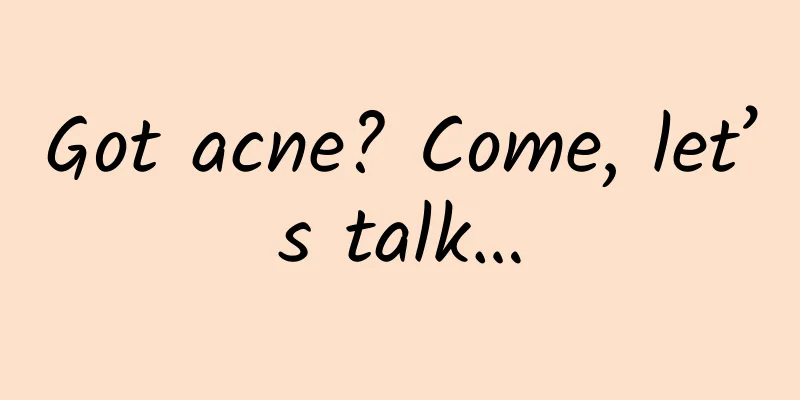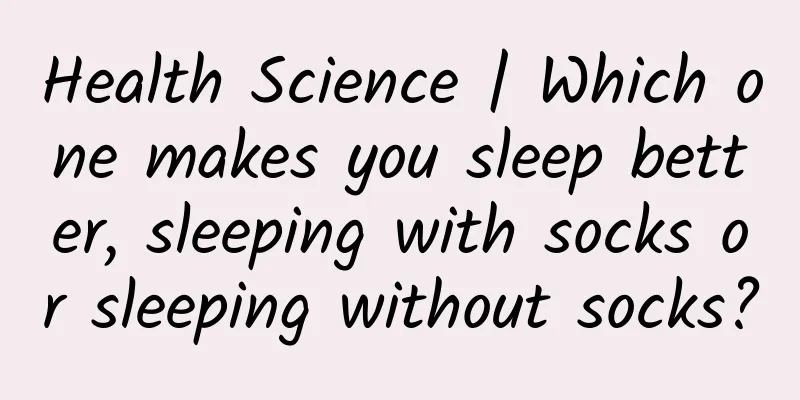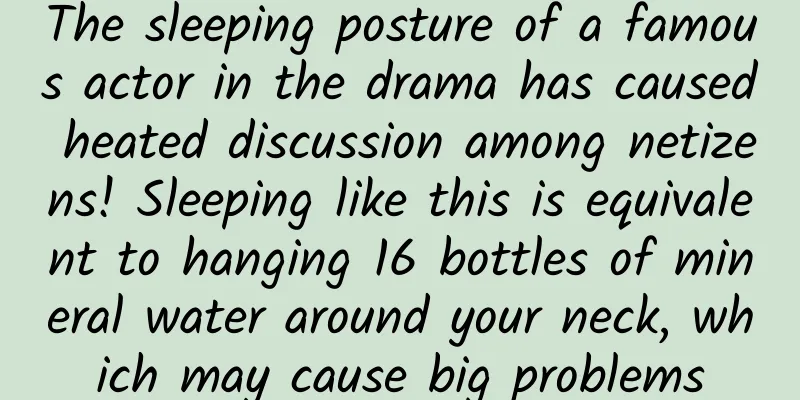Got acne? Come, let’s talk…

|
"Acne" is really a "star" disease in the Department of Dermatology and Venereology! So much so that I explain the pathogenesis, precautions, care methods, medication regimens, guideline recommendations, and treatment methods to children with acne every day... I have recited them to you one by one by heart, for fear that you would not be able to remember them! Then come in, let’s chat and answer all the questions you love to ask. What is acne? Acne, also known as acne, blackheads, pimples, and pimples, is a chronic inflammatory skin disease of the hair follicles and sebaceous glands. It is prone to occur in the face, back, chest and other parts rich in sebaceous glands of adolescents. It generally does not affect health, but it affects appearance and makes people feel inferior, which in turn seriously affects the patient's mental health, study and life, social interaction and employment choices. Pathogenesis? The pathogenesis of this disease is still not fully understood. Factors such as genetics, androgen-induced excessive sebum secretion, abnormal keratinization of sebaceous glands of hair follicles, Propionibacterium acnes infection and inflammation, and immune response are all related to it. Androgen is an important sex hormone in the human body. It is secreted by the testicles in men and mainly by the adrenal cortex and ovaries in women. After entering puberty, the level of androgens, especially testosterone, in the human body increases rapidly. When there are mood swings, fatigue, alcoholism, irregular work and rest (especially staying up late), lack of attention to skin hygiene, and excessive consumption of high-calorie foods, the level of androgen in the human body fluctuates more significantly. Androgen secretion is vigorous, which stimulates the excessive proliferation and secretion of sebaceous gland cells, sebaceous gland dysfunction, and abnormal keratinization of the sebaceous gland duct of the hair follicle causes duct blockage, sebum discharge obstruction, and the formation of keratin plugs, i.e. microacne. Various microorganisms, especially Propionibacterium acnes, multiply in the hair follicles. The lipase produced by Propionibacterium acnes decomposes sebum to produce free fatty acids, Staphylococcus, Malassezia and mites are retained and multiplied, while chemotaxis of inflammatory cells and mediators is performed, ultimately inducing and aggravating the inflammatory response. What performance? It mainly occurs in the forehead, cheeks, upper chest and back, which are areas with high sebum secretion. It manifests as acne, red papules, and small pustules. In severe cases, dark red nodules or cysts may occur. Some patients are left with scars after healing. Clinically, acne is divided into 3 and 4 grades according to the nature of the skin lesions: Mild (Grade I): only acne; Moderate (Grade II): inflammatory papules; Moderate (Grade III): pustules; Severe (Grade IV): nodules, cysts and acne scars. How to treat it? 1. Daily care First of all, you need to get rid of bad living habits, and you also need to know how to keep the skin clean and care for the skin. In normal times, you should limit spicy, sweet, greasy, and high-fat foods that may induce or aggravate acne, eat more vegetables and fruits, and drink plenty of water; you also need to combine work and rest, avoid staying up late, and long-term exposure to computers, mobile phones, and sunlight is not advisable; keep your bowels open; pay attention to facial skin cleansing and moisturizing, reduce sebum secretion, and try to balance water and oil; some patients who have a busy pace of life and high work intensity can try to relax themselves by taking a walk or exercising; in addition, a small number of patients have psychological problems such as anxiety and depression, and appropriate psychological counseling is extremely important at this time. Wash your face with warm water once or twice a day to clean your skin. Be careful not to over-clean it. You can use a mild amino acid facial cleanser. Avoid squeezing or scratching the skin lesions with your hands (it may cause secondary acne, aggravate infection, or cause sequelae such as cysts and scars. In severe cases, the infection on the face may spread to the brain, causing intracranial infection that is difficult to control and treat). Avoid using oily and powdery cosmetics and ointments and creams containing glucocorticoids. Try not to wear makeup! 2. Drug treatment Effective treatment of acne requires standardization and systematization, and targeted treatment according to the severity and duration of the disease. Generally, the appropriate treatment drugs and methods should be selected according to the severity of acne and the nature of skin lesions of different patients. In addition, the mechanism of action of different drugs often targets different stages of acne, so different treatment methods have different effects. Treatment of grade I (mild) acne: mainly local treatment, the first choice is low-concentration retinoic acid drugs, if necessary, benzoyl peroxide or salicylic acid can be added to improve the efficacy, in addition, some functional skin care products with keratin exfoliation, sebum secretion inhibition and antibacterial effects, such as oil-control moisturizing cream, can also be used as auxiliary treatment, and professional squeezers can also be used to remove acne and other physical treatments. It should be noted that in the treatment of acne topical drugs, such as retinoic acid drugs, a few people will have irritation reactions, erythema, desquamation or burning sensation, so we usually recommend to build tolerance first (method 1: at the beginning, you can use it and wash it off ten minutes later. If there is no problem after a week, change it to 20 minutes, then change it to 30 minutes, and finally leave it overnight normally. Method 2: you can also use it every three days, no problem, then change it to every two days, and then use it once every night normally), and avoid using this type of ointment on damaged areas. Treatment of grade II (moderate) acne: Inflammatory papules are usually treated with topical retinoic acid drugs combined with benzoyl peroxide or other topical antibacterial drugs. For those who are not effective in local treatment, oral antibiotics can be used, or physical treatment methods such as red and blue light irradiation or fruit acid therapy can be added. Common topical antibiotics include erythromycin, lincomycin and its derivatives clindamycin, chloramphenicol or chloramphenicol. If drug resistance occurs, the drug regimen needs to be adjusted in time. Treatment of grade III (moderate) acne: This type of patients often present with pustules and can be treated with combined systemic treatment, in which the use of antibiotics is the basic treatment. A sufficient course of treatment must be ensured, combined with topical retinoids, benzoyl peroxide or other antibacterial drugs. Female patients with indications and contraceptive requirements can choose anti-androgen drugs for treatment; other treatment methods (such as red/blue light and photodynamic therapy, etc.) can also be used in combination. For those with poor results, oral isotretinoin can be used alone, and topical benzoyl peroxide can also be used at the same time. Since antibiotics are used for a long time, it is necessary to observe whether they have drug resistance. Adding benzoyl peroxide can prevent and reduce the development of drug resistance. Treatment of grade IV (severe) acne: Oral isotretinoin is the main treatment method. For patients with more inflammatory papules and pustules, systemic antibiotics and topical benzoyl peroxide can be used first. After the inflammation improves, oral isotretinoin can be used instead. (Strict contraception is required during the oral isotretinoin period and within 3 months after stopping the medication. I usually instruct patients to strictly follow contraception until half a year after stopping the medication.) Sometimes the following drugs are also used, and some friends will be confused and find it difficult to accept, and confirm whether they are prescribed incorrectly? Anti-androgen therapy: Oral contraceptives such as cyproterone acetate tablets (such as Diane-35) are suitable for female patients with moderate to severe acne, accompanied by excessive androgen levels (such as hirsutism, seborrhea, etc.) or polycystic ovary syndrome. Female patients with delayed acne and significantly aggravated acne before menstruation may also consider using oral contraceptives. Oral glucocorticoids : mainly used for fulminant or aggregated acne, following the principles of short-term, low-dose, and combined with other methods. Acne post-treatment? After acne treatment, patients will have more or less depressed acne scars (commonly known as "acne pits") of varying degrees in the later stages. Some acne patients fail to receive timely treatment or fail to receive standardized systematic treatment, which can lead to the formation of acne pits as they fail to treat acne during the inflammatory phase of the lesion. Acne pits that have already formed often fail to resolve on their own and require medical intervention (as for flat, simple acne scars, most will resolve naturally over time, and of course, a little medication may also help, such as adapalene gel, azelaic acid cream, hirudo, centella asiatica, etc. However, it is still emphasized that acne scars must be actively prevented in the early stages of inflammatory skin lesions of acne. Do not squeeze or pinch, which can cause secondary trauma, leading to aggravated inflammation and pigmentation that turns into so-called acne scars, or forms acne pits). The treatment of acne scars takes a long time and takes a long time to take effect, but it can achieve a certain improvement effect, so the timely and standardized systematic treatment mentioned above is particularly important. However, the birth of many innovative treatment methods in recent years has brought great hope to its treatment. Some new treatment methods with less trauma, faster healing and better repair have emerged successively: currently, special grinders and more advanced grinding heads have been widely used in clinical practice to treat the late-stage repair and beauty of acne. After treatment, the skin generally heals without leaving scars, and the effect is definite. Laser and intense pulsed light technology are the fastest-growing therapies in recent years. They come in many types and have different functions. Light energy of different wavelengths can be absorbed by specific targets such as melanin and hemoglobin, selectively destroying pigmented blood vessels to exert therapeutic effects and improve the appearance of skin lesions. Fractional laser acts on the epidermis and dermis by emitting tiny laser beams arranged in a dot matrix. The shape and depth of the micro-damage area can be changed by adjusting the laser parameters. It is suitable for the fine treatment of different types of scars. The repair process is fast and efficient, and the incidence of adverse reactions is significantly reduced. Currently, fractional laser has gradually become the gold standard for the treatment of depressed acne scars. Commonly used fractional lasers include erbium laser and ultra-pulsed fractional laser. Intense pulsed light is a non-ablative and non-invasive skin treatment technology with few adverse reactions, mainly including short-term mild erythema, swelling, and pigmentation. The treatment does not affect work and life. It also has a good effect on improving skin quality and inhibiting inflammatory acne. In addition, there are chemical peels or abrasion treatments. In short, each treatment method has its own advantages and needs to be selected according to the different acne lesions. Generally, the effects are satisfactory. |
<<: In addition to the legs, angiography can also be done on the wrist! Don't be unaware of this now
>>: Autism is not a quirk: Breaking down misconceptions about ASD
Recommend
The reasons for irregular menstruation after childbirth will all be clear after reading this
Irregular menstruation is very common after givin...
Have you ever tried vaginal blowing?
I believe that many girls have had the experience...
What are the causes of breast tenderness and delayed menstruation?
Menstruation is a physiological phenomenon unique...
Can I drink coix seed dehumidifying tea during menstruation?
I believe that everyone has begun to feel a littl...
How to deal with spotting during pregnancy
If you see blood during intercourse after becomin...
Is there any permanent cure for mold?
Fungus is a problem that troubles many women, inc...
Pictures of cauliflower growing on female vulva
Vulvar growths are mostly considered to be flat w...
Why does bleeding still occur after uterine curettage?
Generally, a uterine curettage is required during...
8 blood-replenishing desserts that effectively replenish qi and blood deficiency during menstruation
1. Ginger, jujube and brown sugar water Ingredien...
How to lose weight during menstrual cycle
In fact, many female friends now want to lose wei...
Cervical cancer surgery
Cervical tumor surgery requires patients to choos...
How many days after abortion can I run?
Generally, after undergoing medical abortion, wom...
Bringing new possibilities to cancer care! The world's first full-slice digital pathology model is released
Contributing author: Xu Hanwen (second-year docto...
Precautions for patients with chronic obstructive pulmonary disease in summer
Chronic obstructive pulmonary disease (COPD) is t...









